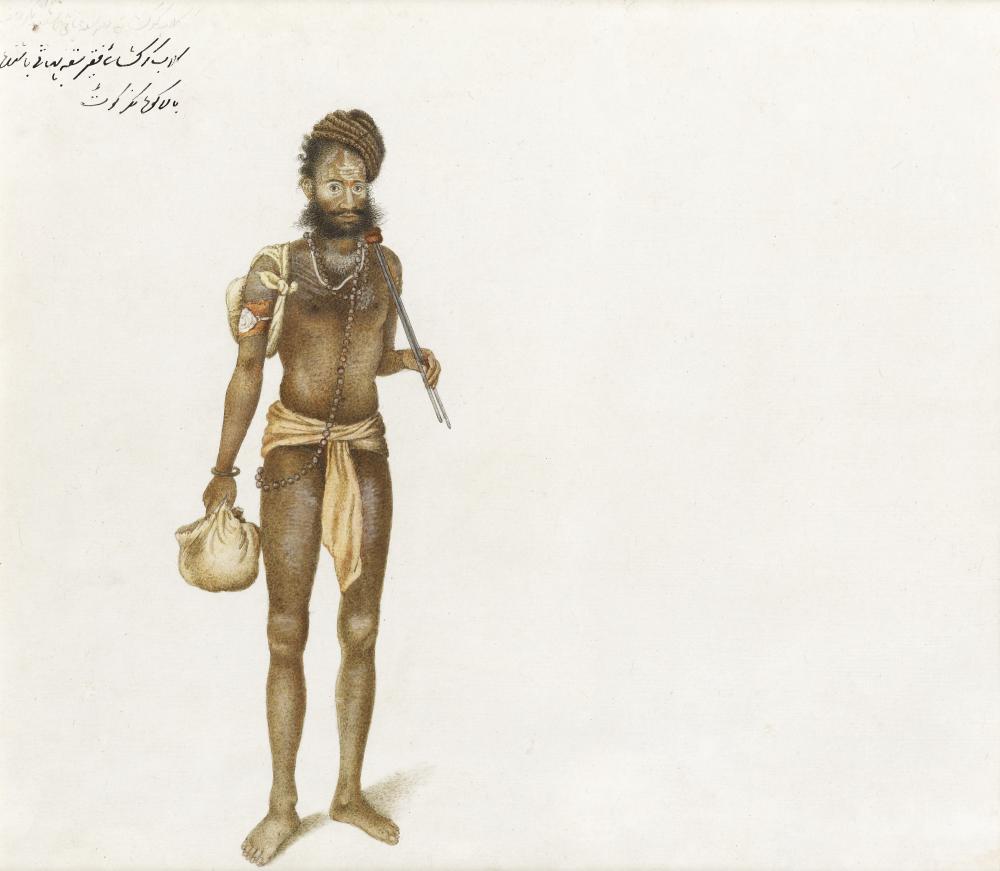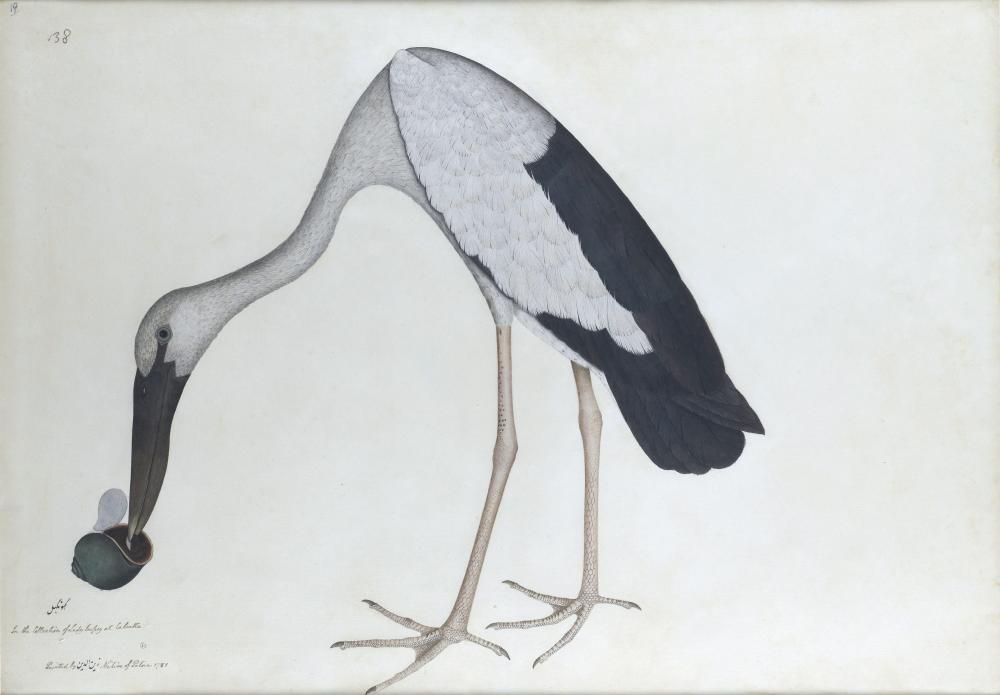Company School, Delhi, Commissioned by William Fraser and James Fraser
Illustration from the Fraser Album: Shayk Husayn Bakhsh, a mendicant; The musicians Karim Baksh, Pir Bakhsh, Dil Jan of Karnal and Shadi
Provenance
James Fraser (1783-1856) and William Fraser (1784-1835)
By descent
Kyburg Limited,1988
The V.S. Naipaul Collection
Literature
Archer and Falk, India Revealed: The art and adventures of James and William Fraser, 1801-35, London, 1989, no.76
Falk, T., The British Collector in India, Kyburg Limited, London, 1988, no.10
This work is from the celebrated series of watercolours painted for the brothers William and James Fraser in India from 1815 onwards. The paintings of the Fraser Album are acknowledged as the finest and most important group of early 19th century works of this type, recording dignitaries, soldiers, notable characters, tribesmen, local men and women, village scenes, merchants, musicians, dancing girls and members of William Fraser’s household, including his secretary (see below), and some of which record official meetings and processes relating to the administration of the British East India Company’s growing territories.
William Fraser (1884-1835), the second son of Edward Fraser of Reelig, Inverness-shire, travelled to India in 1801 at the age of sixteen to take up a career in the political service of the East India Company. After training at Fort William College, Calcutta, he was appointed as assistant to the British Resident at Delhi. In 1814 James Fraser (1783-1856) followed his younger brother to India, intent on raising the family's financial fortunes by joining a merchant house in Calcutta. They met up in 1815 and travelled together in the Himalayas, arriving back in Delhi in August 1815, James subsequently returning to Calcutta in 1816. Under James's encouragement, William commissioned a local artist to record the people and scenes that he came across in his work in and around Delhi, and sent a batch of forty such watercolours to James in Calcutta in 1819. William continued in his political and administrative duties in and around Delhi until 1835, when he was assassinated at the instigation the young Nawab Shams ai-Din of Firozpur, who was disgruntled following a complex legal case in which William had acted as arbiter. The Company School works commissioned by William Fraser were painted by at least three artists: Ghulam Ali Khan, Lallji and his personal artist now known as the Fraser Artist or the Fraser Master. James Fraser, a talented artist himself, painted a series of watercolours of landscapes and architecture ‘In different regions of India, principally in the Himalayas and Calcutta’, which were published to great acclaim on his return to Britain. He also painted many views of Persia during his journey home. After James Fraser's return to Britain he immersed himself in the family affairs, spending his time between Scotland and London. The paintings that had been brought or sent back to Scotland remained in the Fraser family until 1979, when they were rediscovered, along with the brothers' correspondence, James's diaries and a wealth of other documents and historical material. The great majority of paintings from William and James Fraser's collections were dispersed at three auctions in 1980. For an extensive and thorough account of the brothers’ lives and artistic activities see Archer and Falk 1989. See also Dalrymple and Sharma 2012.
The present work shows two separate scenes, identified in Persian: the scene on the left shows Shaykh Husayn Bakhsh of Karnataka with a water carrier (the dog and landscape rendered in pencil may be additions by James Fraser). The scene on the right shows a group of musicians identified (from the right) as Karim Baksh, Pir Bakhsh, the dancer Dil Jan of Karnal and Shadi.


